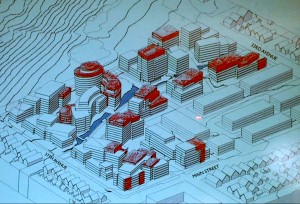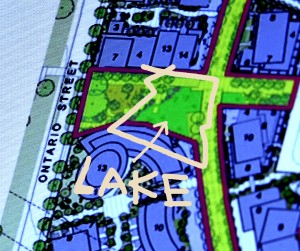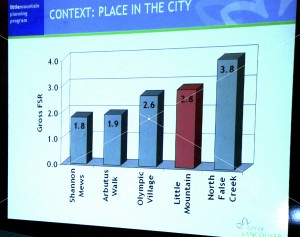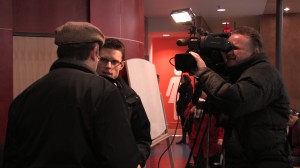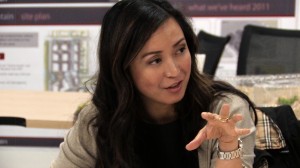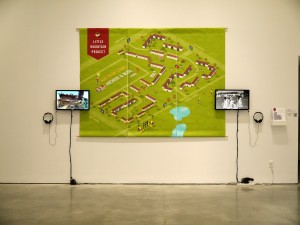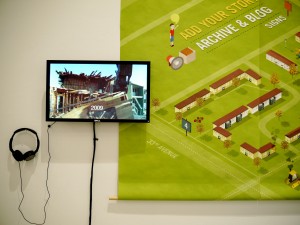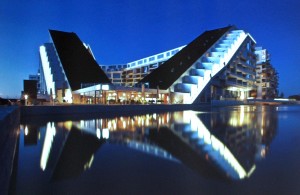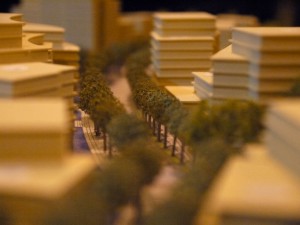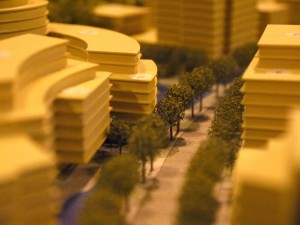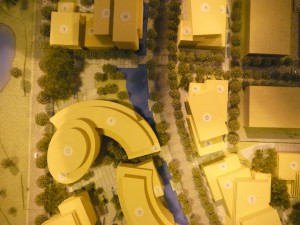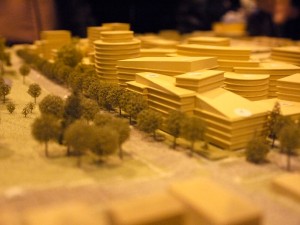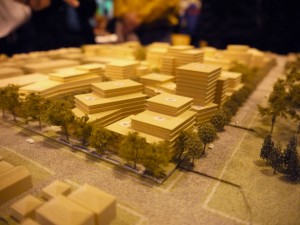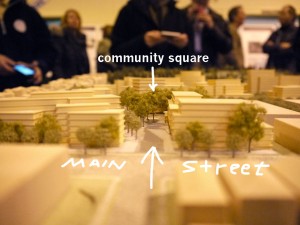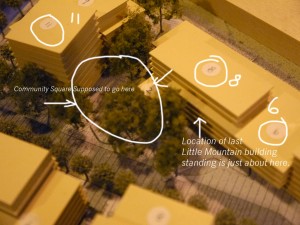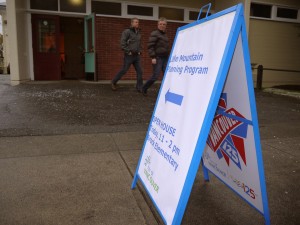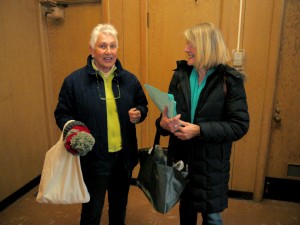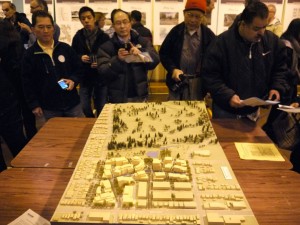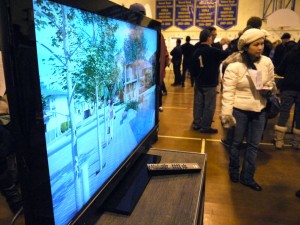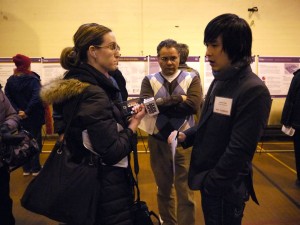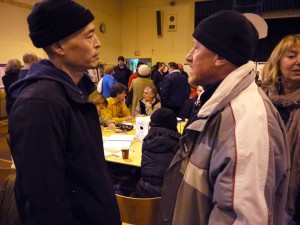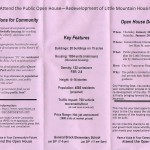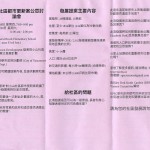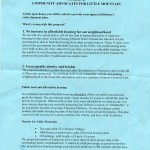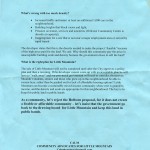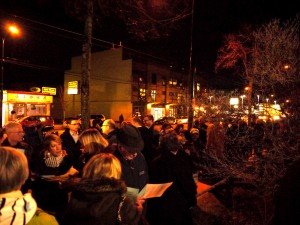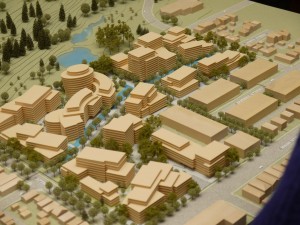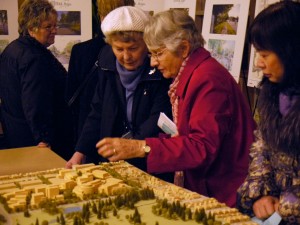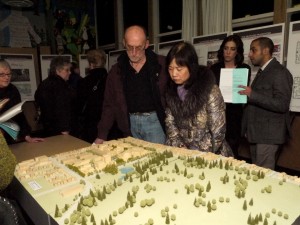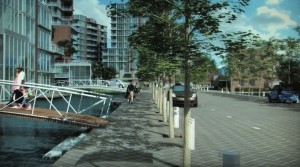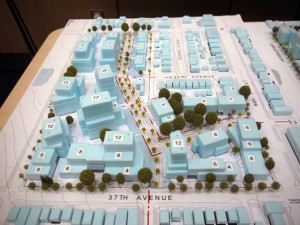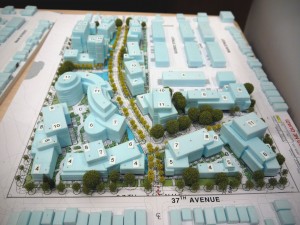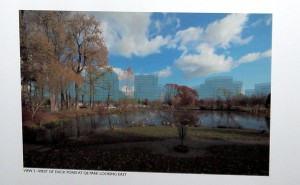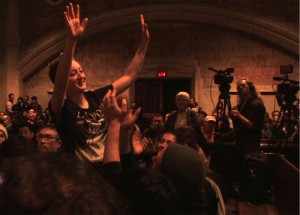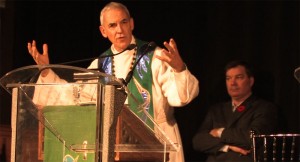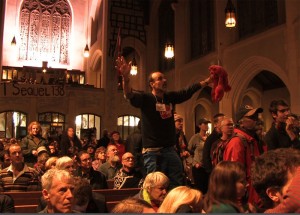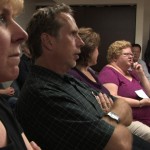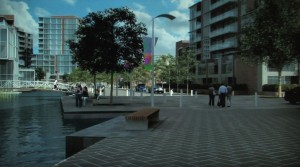Meeting #29
THE CITY’S POSITION on Holborn’s Little Mountain Plan.
April 3, 2012
The Planning Department outlines their support for, and criticisms of the Holborn Concept. By defining their position, the Planning Department defines the difference between their position and that of the community. Shocked and surprised? No, not really. The community understands the challenges ahead.
Full Meeting:
In the meeting…
The Advisory Group compliments the planning department on their work, but finds that although the planning departments criticisms are many and good, their overall density of the site is unworkable at their suggested range of 2.3fsr to 2.5fsr.
The Advisory Group suggests that the maximum density be pegged at 2.3, as was represented as the point at which the developer would make a profit and the community get the amenities it wants. (Coriolis presentation Meeting #23)
Patricia St. Michel’s power point presentation can be viewed in complete PDF format on the City of Vancouver’s Major Site Planning Pages. If your computer screen is big enough you can view both the PDF and video at the same time, getting the best visuals and commentary simultaneously.
Shorter Version: 45 min.
Highlights of the Short Version:
00:45 – Ben Johnson of City Planning presents Holborn’s density numbers:
1834 housing units of which 1600 are Market and 234 are Social Housing.
Density Range 2.5 – 2.8FSR.
01:30 – Patricia St. Michel of City Planning presents the City’s critique of Holborn design.
02:29 – Holborn’s Little Mountain plan shown to have higher density than Olympic Village.
03:15 – View analysis from Peak of Queen Elizabeth Park, across Little Mountain Site.
05:45 – Summary of height and density changes requested by the City Planning Department.
07:45 – Patricia St. Michel states City Planning’s preference for a 2.3 to 2.5 FSR range.
08:00 – Community Discussion Begins
08:00 – Where is shadow analysis at Xmas time? Answer has to do with Northern Climate Challenges.
10:00 – Issue of South site transitions rapidly rising from 4 to 7 stories.
10:50 – Why lower scale buildings and tighter courtyards (in keeping with single family neighbourhood) are not an option.
12:39 – James Cheng mentions that there may not be a housing solution that the Little Mountain Neighbourhood will accept.
13:29 – Community Member (Deborah) thanks the Planning Department on their careful analysis, principle and performance based, and the ways the height trimming is considered and why…but argues that the amount of housing load that is being considered for the site is too much.
17:10 – Ben Johnson argues that Holborn will need to earn the extra density above 2.3 with exceptional housing design.
17:40 – Frustrated observer argues that sunlight discussion is irrelevant.
19:00 – Patricia discusses “Mystery Lake” and water features on the site.
19:30 – President of the Neighbourhood House argues that the deal is good.
20:30 – Norm Dooley (RPSC) argues that Arbutus Walk (Meeting #15) is a better model for Little Mountain housing, and that Little Mountain won’t solve all of Vancouver’s problems. Applause follows.
27:00 – From the very beginning, the entire BC Gov’t concept is wrong, when “We’re selling the house to pay for the furniture.”
28:00 – Another notice of Mystery Lake.
28:30 – Neighbourhood House Executive Director argues in favour of the plan owing to costs of building and land, (Arbutus Walk built many years ago) and the amenities delivered.
32:00 – Frustrated observer says “Go ahead full force!”
33:30 – Resident argues that this new housing plan is a stark change for this community.
35:00 – Ben Johnson explains how the city will present both their position and the position of the Little Mountain Advisory Group to Vancouver City Council.
Things START TO HEAT UP here:
36:00 – Resident wonders if the next 3 meetings are worth attending, since the City has presented the essence of their position. The answer is vague.
38:30 – Ned Jacobs argues that even if 2.3 is the best number owing to the political pressure that is exerted on City Planners to increase densities during further development phases.
40:45 – Resident of North of 33rd Avenue Group asks if the City would acknowledge a consensus of the residents of Little Mountain at 2.3FSR and adopt it? The City answers that there are levels of senior management at City Hall who have provided direction of 2.3 to 2.5 FSR owing to multiple city priorities. So the answer is no.
42:00 – WHO is the HIGHER LEVEL? (of decision making in the city)
43:30 – This is YOUR community, but not YOUR city.
44:30 – Ingrid Steenhuisen points out how far the community has come in the acceptance of high densities – of which 2.3FSR is a high density.
45:20 – A discussion ensues about how a Little Mountain Advisory Group Sub Group could write a report which would send a powerful message to Vancouver City Council about their agreement regarding the density which they see as maximum for their neighbourhoods.
After considerable discussion it becomes clear that there will be 3 different presentations that go to council:
One by the Planning department,
One by the Holborn Group,
One by the Advisory Group.
But there is a considerable amount of finessing to take place, so it is unclear what the city’s final position will look like. By the end of this meeting, there is considerable tension in the room, as what goodwill that once existed between the planning department and the citizens apparently evaporates. Ben Johnson states that at a higher political level there is approval of their recommendations. Considering the considerable investment of time, effort, and intelligence in the process, community members wonder if council will consider their input at all.
The Advisory Group does not consider that its input has been narrowly defined by self interest, but by the needs of the surrounding community and the city as a whole, in terms of amenities, infrastructure (including transit, traffic, cycling, park, educational, social, arts issues etc.)and the crisis in social and affordable housing.
Next episodes:
Meeting #30 Traffic and Transportation issues
Meeting #31 Amenities & Affordability
Meeting #32 Holborn speaks to former residents
Meeting #33 **Design Panel – Uploaded 2 weeks ago** check “Recent Posts”
Meeting #34 Sustainability Policies and Little Mountain
Meeting #35 ADVISORY GROUP PRESENTS THEIR RESPONSE
MEETING #36 COUNCIL MEETING JUNE 27, 2012.
Heading to City Council:
The finish line has been tentatively set for June 27, 2012.
That’s the date when the Little Mountain Advisory Committee, the City of Vancouver planning department, the Holborn Group, and You make your thoughts known to Vancouver City Council about the deliberations of the past 2 and a half years. At the meeting the planning department will present a policy statement on the current plans, for the approval of City Council. If approved, the policy statement will guide the future rezoning process at the Little Mountain site. The rezoning process (up to a year or more in duration) will include public and legal processes.
David Vaisbord
Little Mountain Neighbourhood

